Goals for this Lab
- To use knowledge gained from previous labs to identify hominin skulls
- Compare the different species of hominins of the genus Homo to one another. What are the morphological differences and similarities? How might those characteristics reflect life history (diet, locomotion, social structure)?
- Explain what the variation among fossil hominins means for of the evolution of the hominin lineage.
Procedure
Read through the descriptions of features that we observe changing throughout the evolution of the hominin lineage. Then, observe the 3D images of hominin skulls below to fill in the chart on the next two pages.
After you’ve filled in the table, please answer the analysis questions. Some of these will ask you to reference your previous labs for comparisons, and some will have you look at additional sites for information on post-cranial portions of the skeleton.
Physical Characteristics
Foramen Magnum
The foramen magnum is the hole in the skull where the spinal cord connects with the brain. The foramen magnum’s location identifies locomotive patterns. If the foramen magnum is located centrally (underneath), that individual was likely bipedal, as their spine would orient vertically and the skull would face forward. If the foramen magnum was towards the back, they were likely quadrupeds, and their skull faced forward. Note that the foramen magnum moves along a gradient.
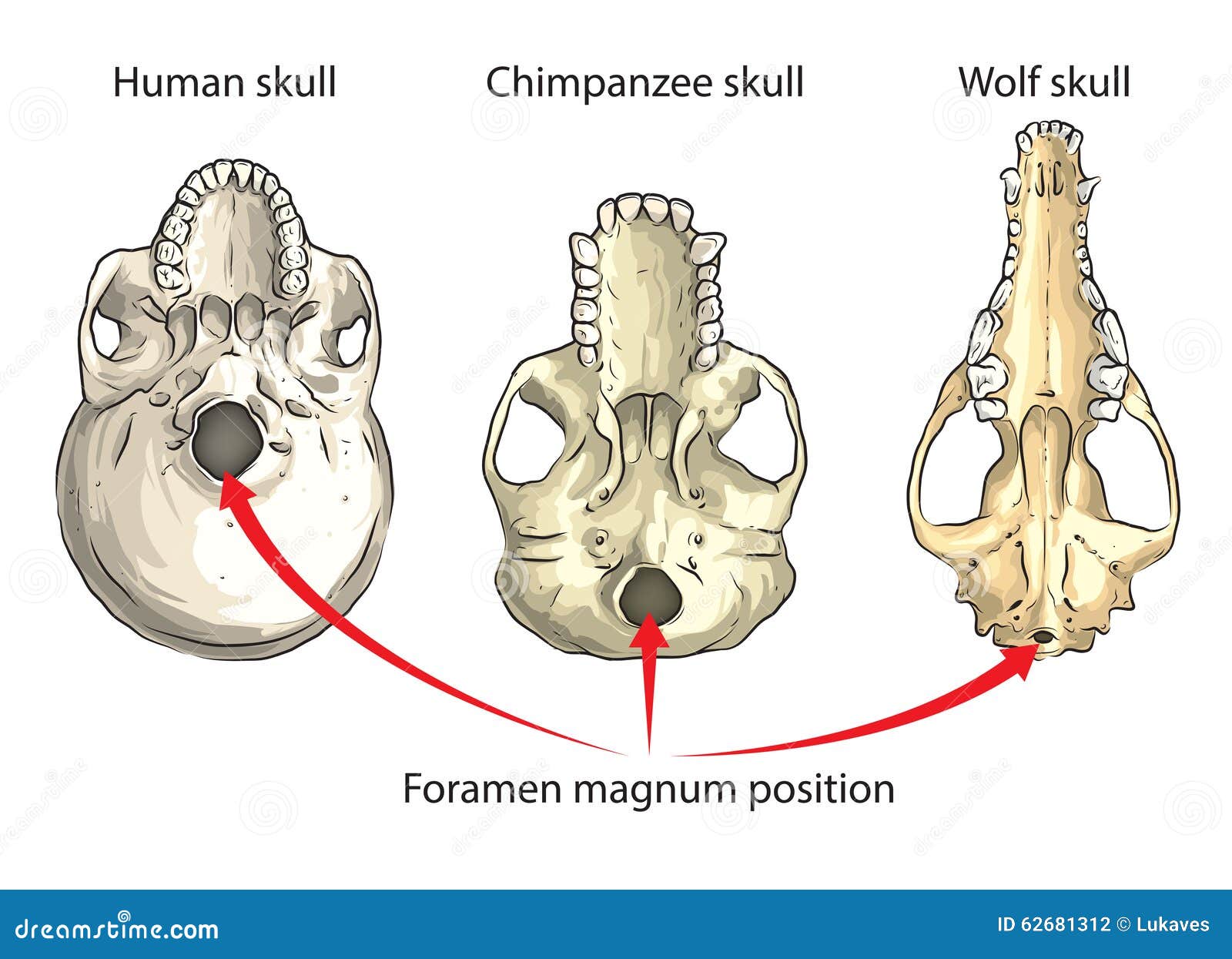

Prognathism
Prognathism refers to facial projection. Humans have orthognathic faces, meaning that our face is almost entirely flat beneath our foreheads. Apes, and most other primates in general, have prognathic faces that project forward beneath their foreheads. A good method for determining how prognathic a skull is would be to draw a vertical line down from the brow ridge, and look at how much of the lower face crosses the line.

Dentition
Primates have generalized dentition, meaning that we have different types of teeth that serve different purposes: incisors (used for shearing, tearing, stripping, and sometimes puncturing); canines (used for gripping, puncturing); and premolars/molars (used for grinding). Typically, the larger any one of those tooth types are in an individual, the more they rely on that tooth function in their diet (the major exception being large canines in primates, which we believe to be more closely related to social differentiation). Therefore, we would hypothesize that an individual with larger incisors might rely on a diet of softer leafy/fruit-based sources that requires more tearing/shearing, while an individual with larger molars may have a diet that includes more hard, tough foods that require grinding.
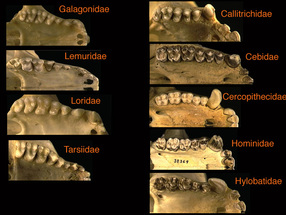
Braincase
The size of the braincase looks at what percentage of an individual’s skull holds their brain. It can be determined by identifying the hollow portion of the skull behind the browridge/ nasal and dentition regions.
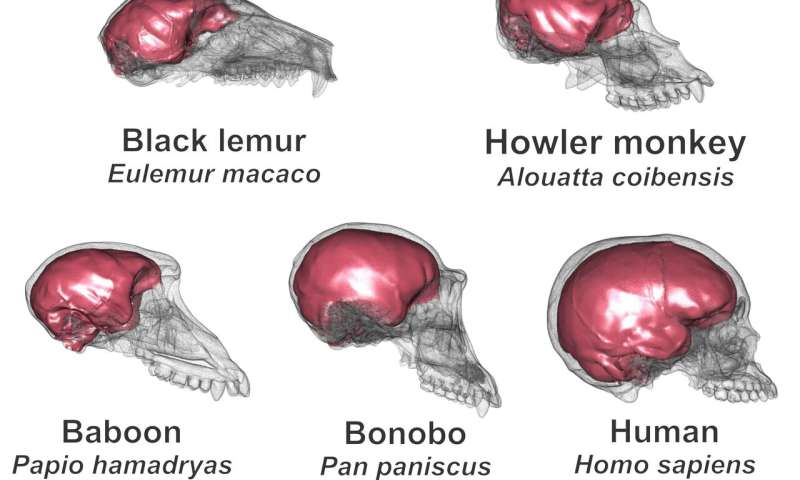
Mastication-related features

Postorbital Constriction and Zygomatic Arch
Postorbital constriction refers to the narrowing of the cranium behind the orbits on a skull. An individual who has increased postorbital constriction will have larger temporal muscles, allowing for increased chewing power. Typically, in cases of increased postorbital constriction, we also tend to see increased zygomatic arches (cheek bones) that allow additional space for the larger temporal muscles.
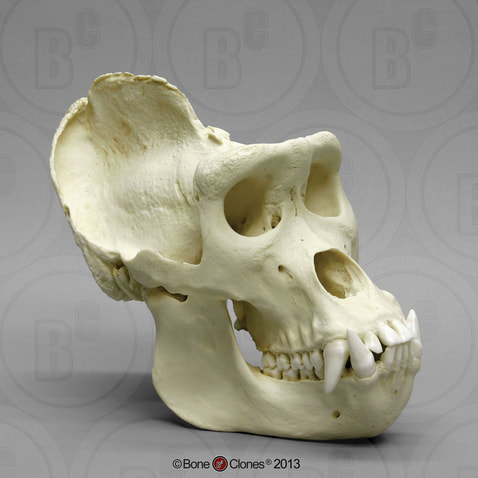
Sagittal Crest
A sagittal crest is a linear protrusion of bone on the top of the skull. The sagittal crest increases the surface area of the skull, allowing for greater muscle attachment space, resulting in larger temporal muscles, again increasing an individual’s chewing power.
Chin
There is disagreement among scientists as to what the function of having a chin is (See this article for several hypotheses). What they all agree on, however, is that only Homo sapiens have a “true chin”, or vertical bone that descends from the front wall of teeth in the mandible. We can look at the degree to which other primate species come closer to having a chin by analyzing the angle of the mandible under the teeth. In the image below, note the vertical human chin vs. the very slanted mandible in the non-human primate.

Forehead
In primate evolution, we see larger foreheads appear in conjunction with an increase in brain size overall, and more specifically with an increase in the frontal lobe. When comparing the forehead across species, we can rank them from more vertical to more sloping.
Occipital Bun
The occipital bun (also referred to as nuchal torus) is a bony protrusion at the posterior (back) end of the occipital bone. This feature is believed to provide additional stability for the skull by increasing attachment space for neck muscles. In the image below, you can see the presence of the occipital bun at the back of the skull in the Neanderthal (right) and no bun present in the human skull (left).
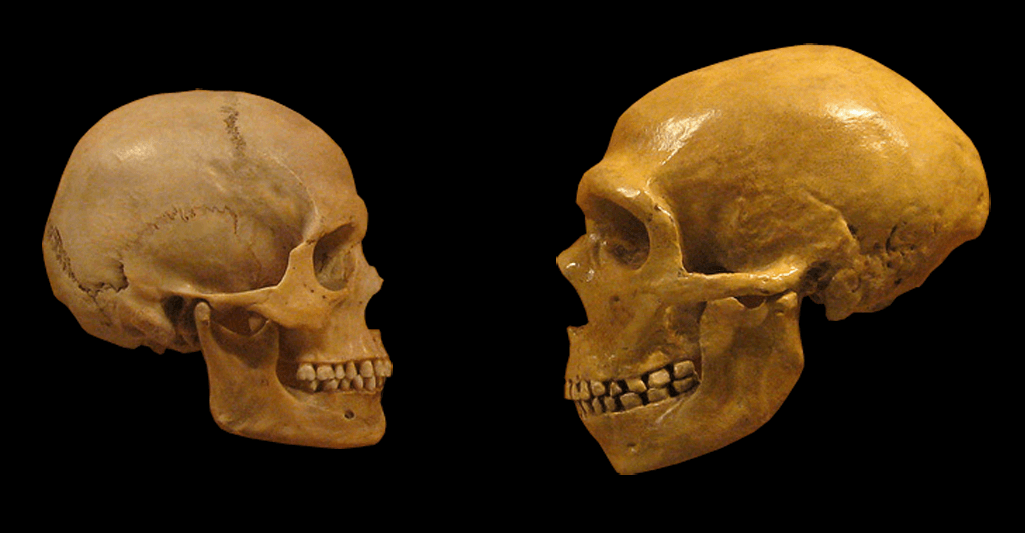
Further Reading
Before completing the comparative table, please check out the interactive species site hosted through the Smithsonian Museum. This is optional, but this will DEFINITELY help you with your final projects.
Smithsonian National Museum, What does it mean to be human?
Station 1: Cranial Comparisons
Please use the scale below when comparing the indicated features (not all features will be included on this table):



Station 2: Post-Cranial Comparison and Analysis Questions
Compare the 3D images of the Homo erectus, Neanderthal, and modern Homo sapiens pelves. What major similarities and differences do you notice in terms of size, robusticity, and proportions?
Summary observations: In looking at the time periods of each of the specimens you looked at in this lab, what can you say about general evolutionary trends of each of the following features over time?
Supraorbital Torus
Prognathism
Postorbital constriction
Nose size/projection
Features and size of jaws/teeth
Shape/Size of the cranium